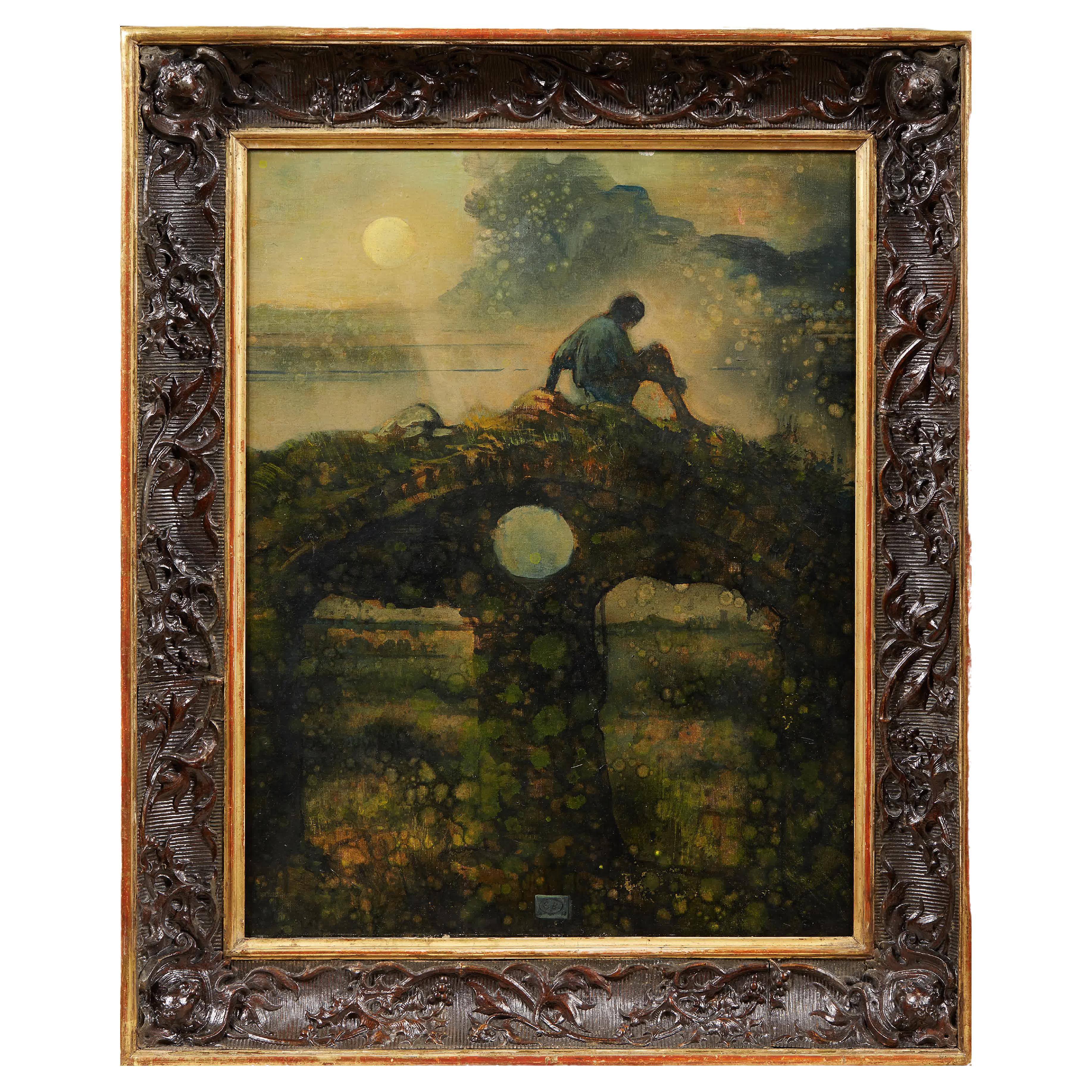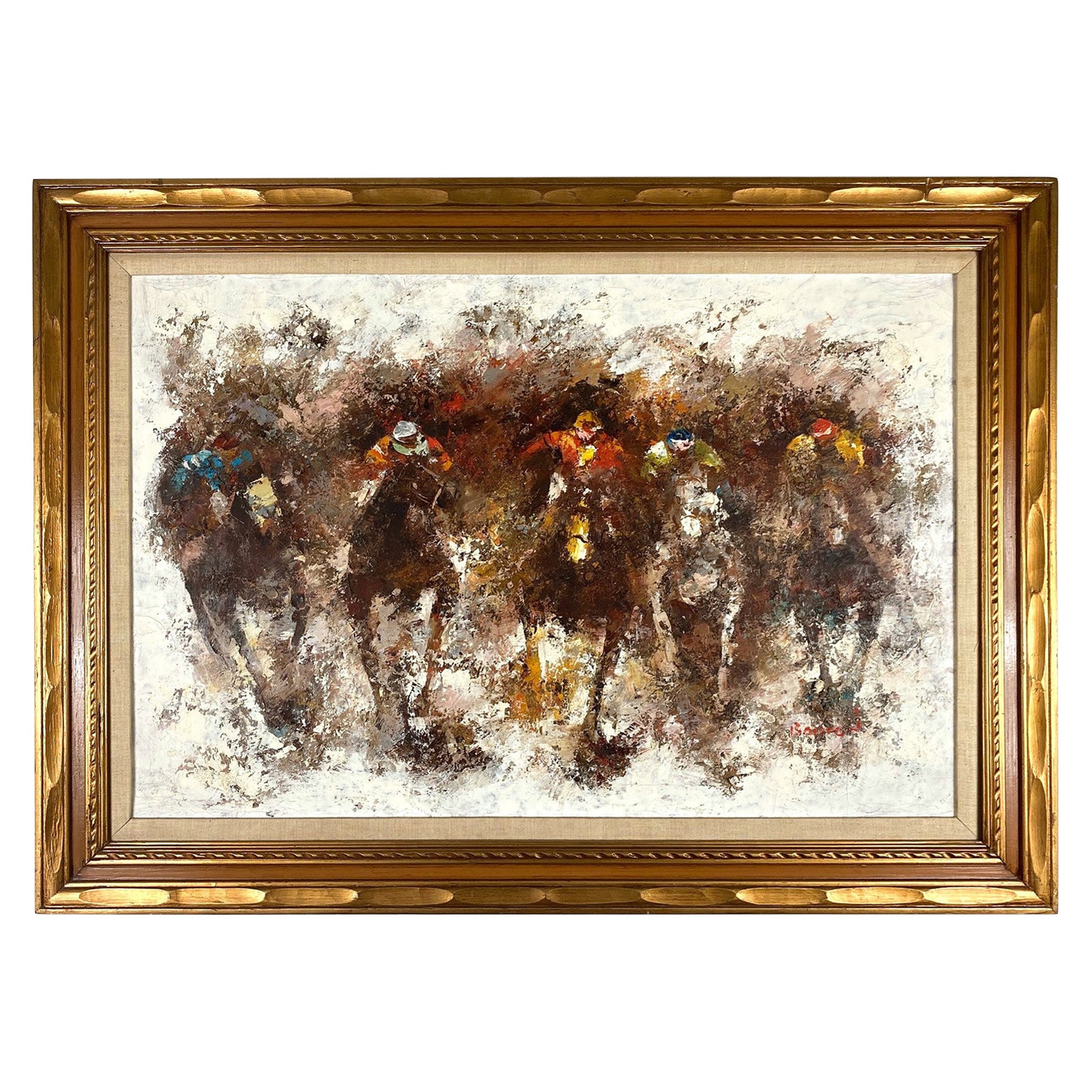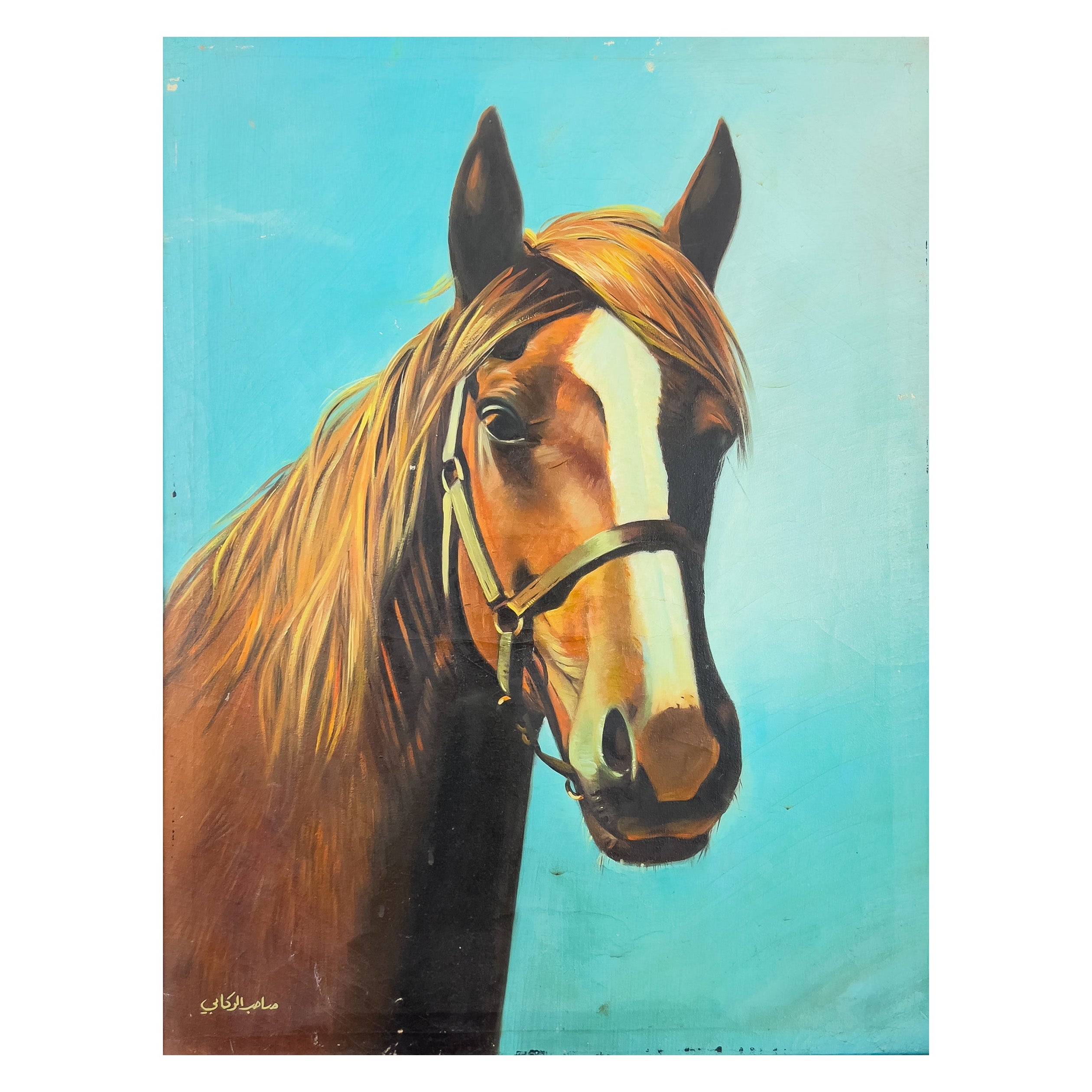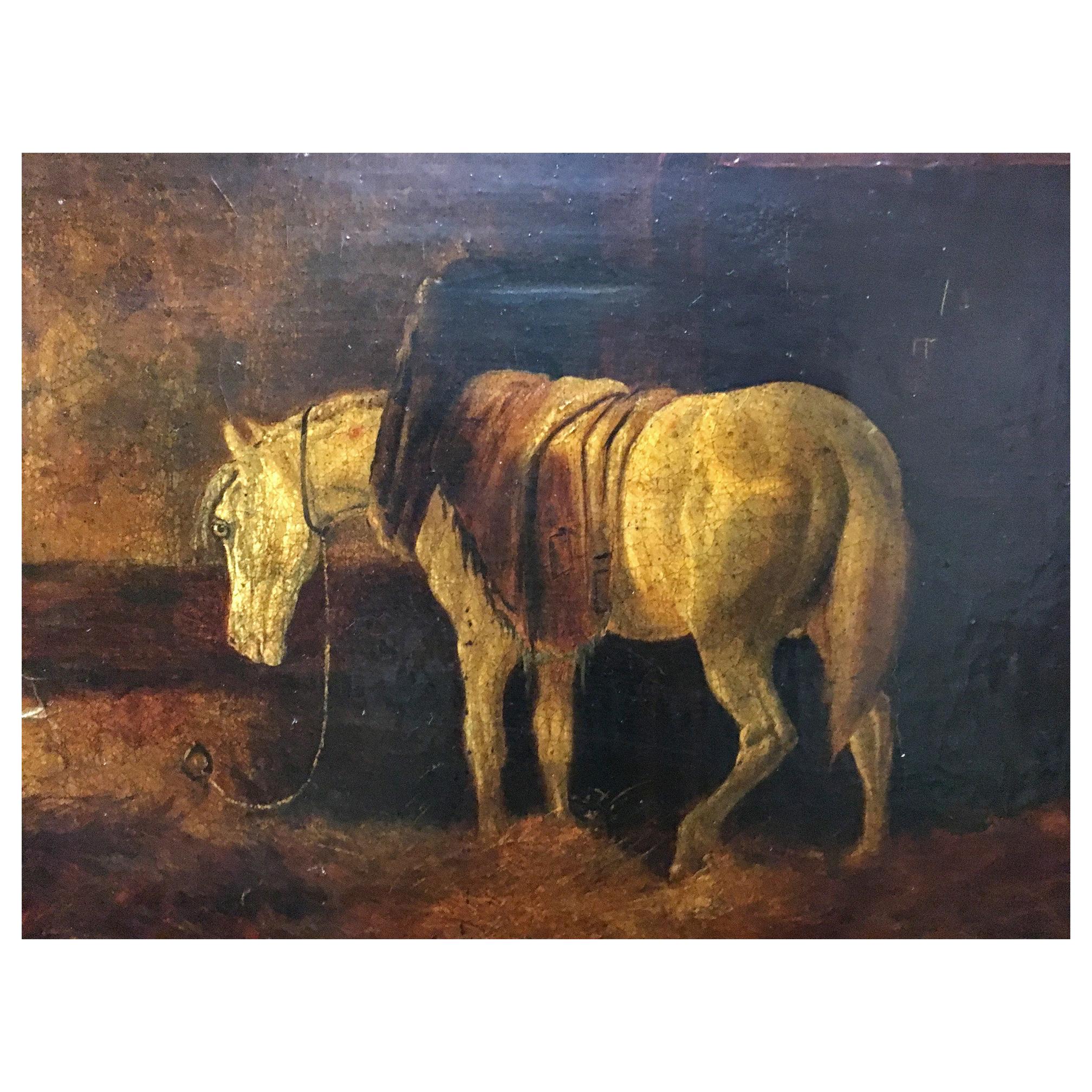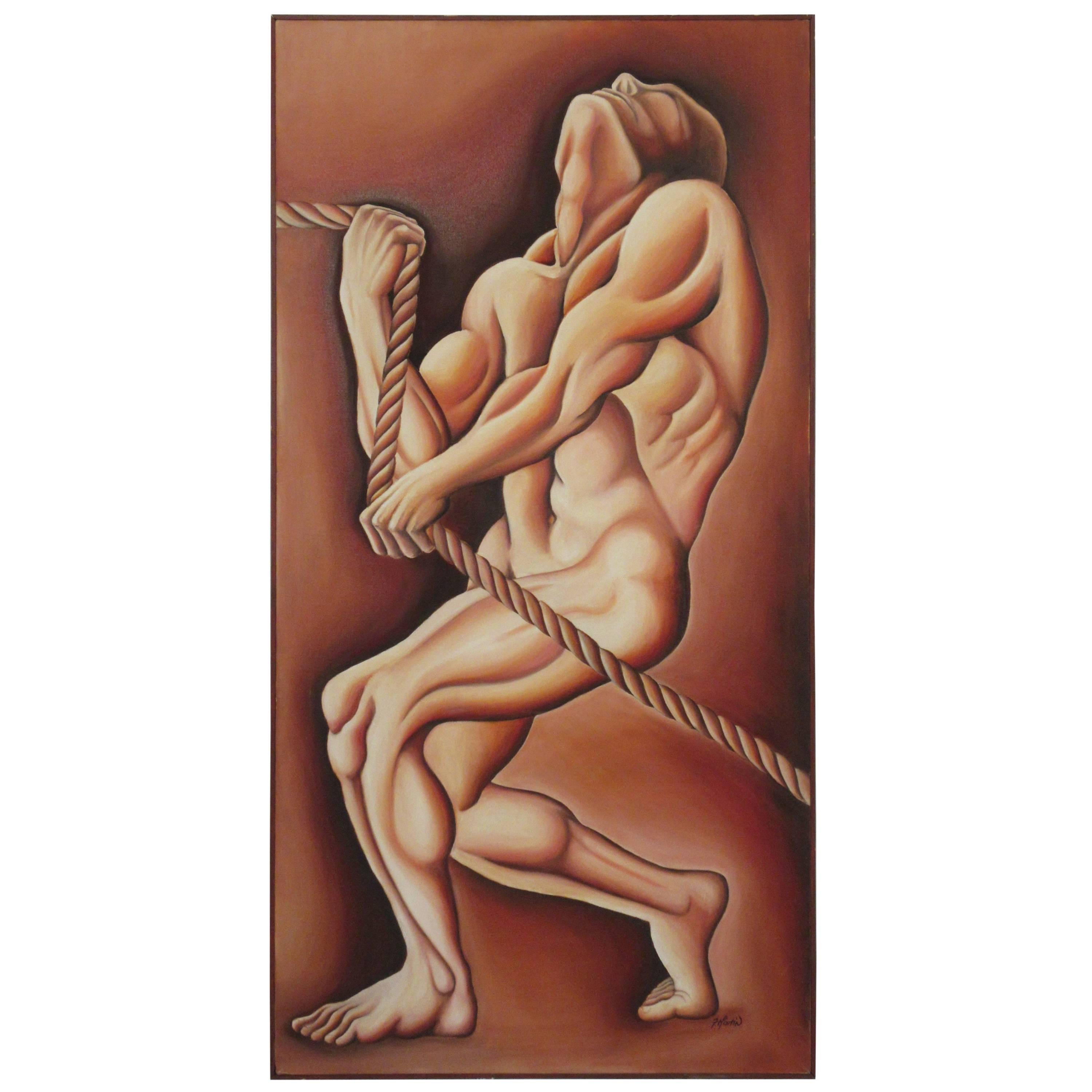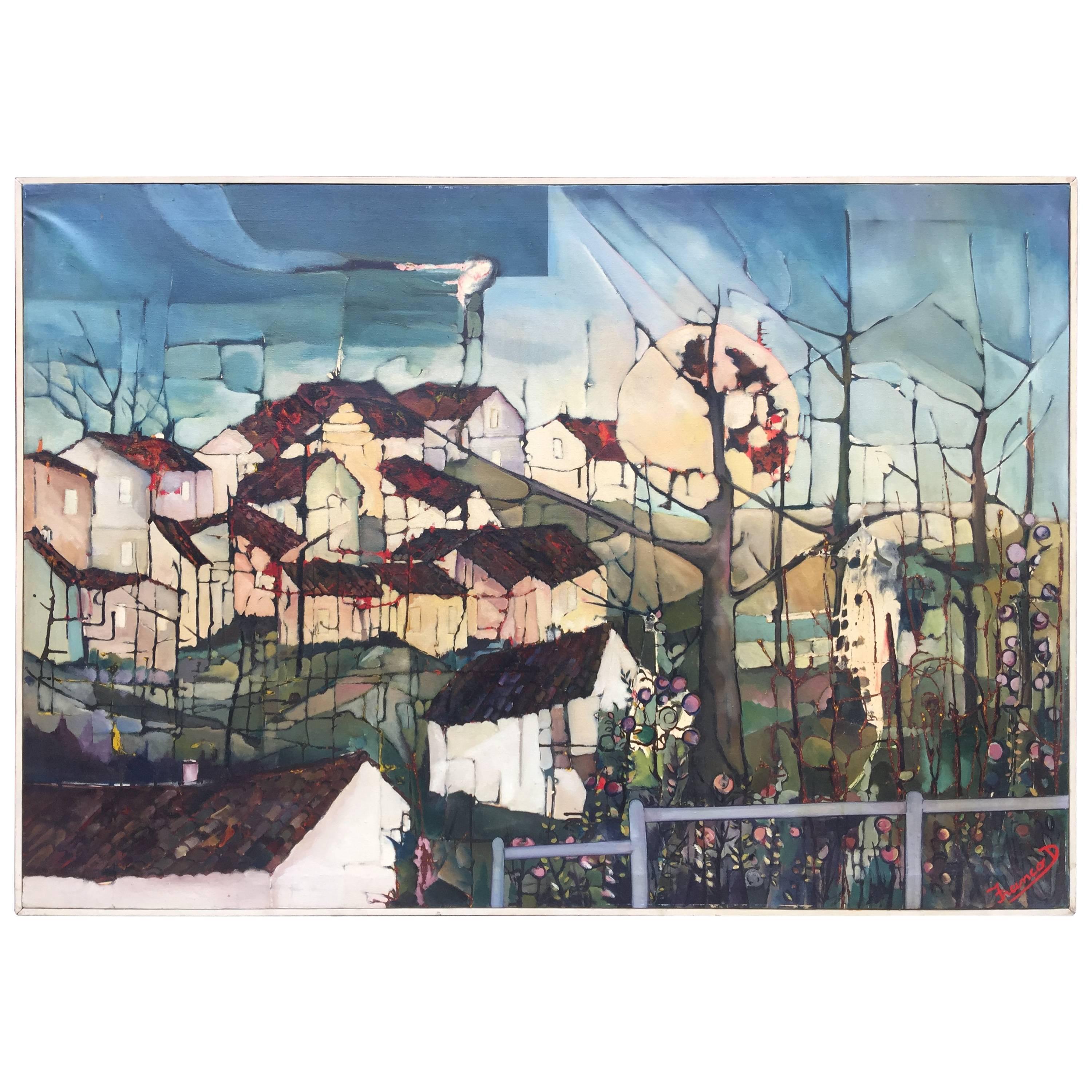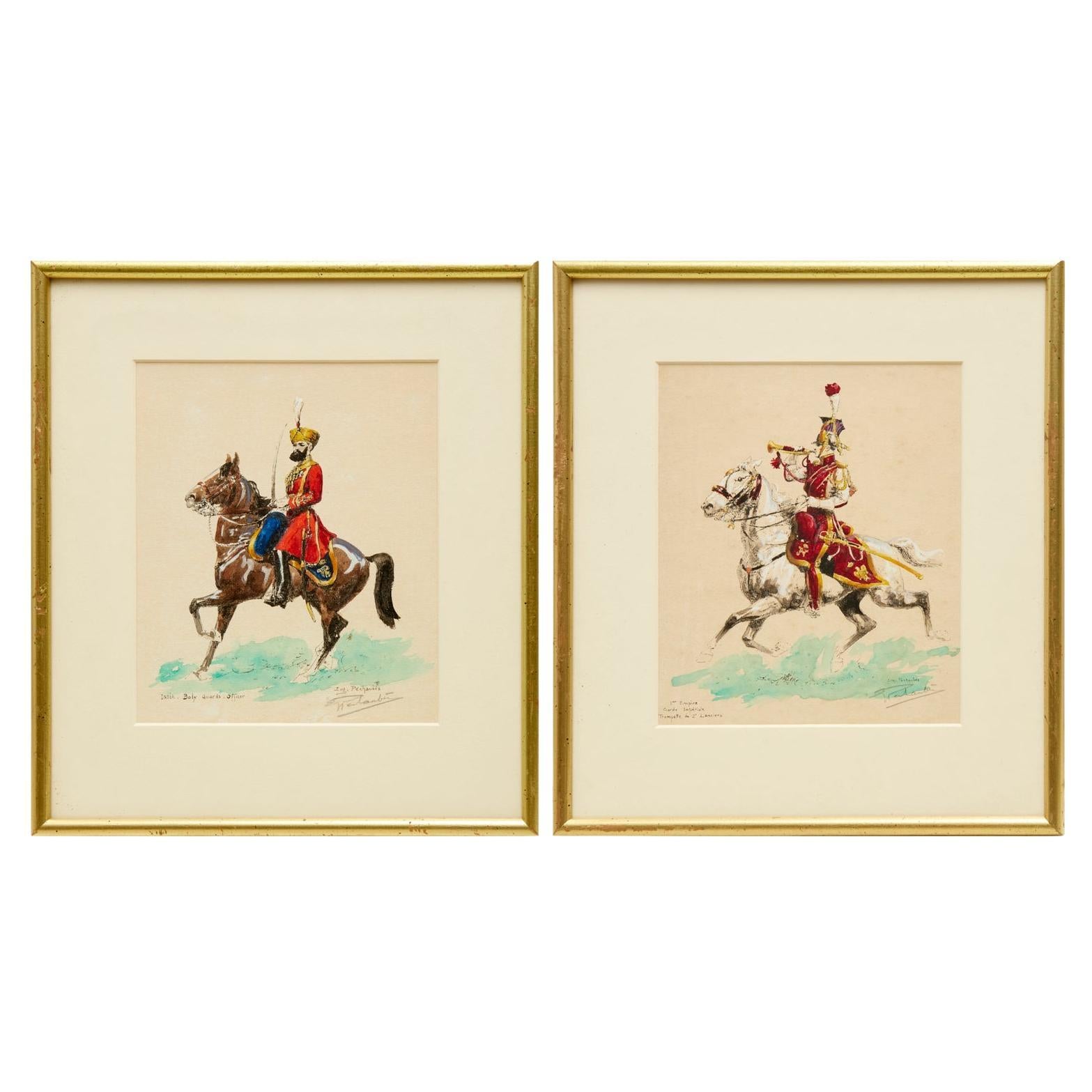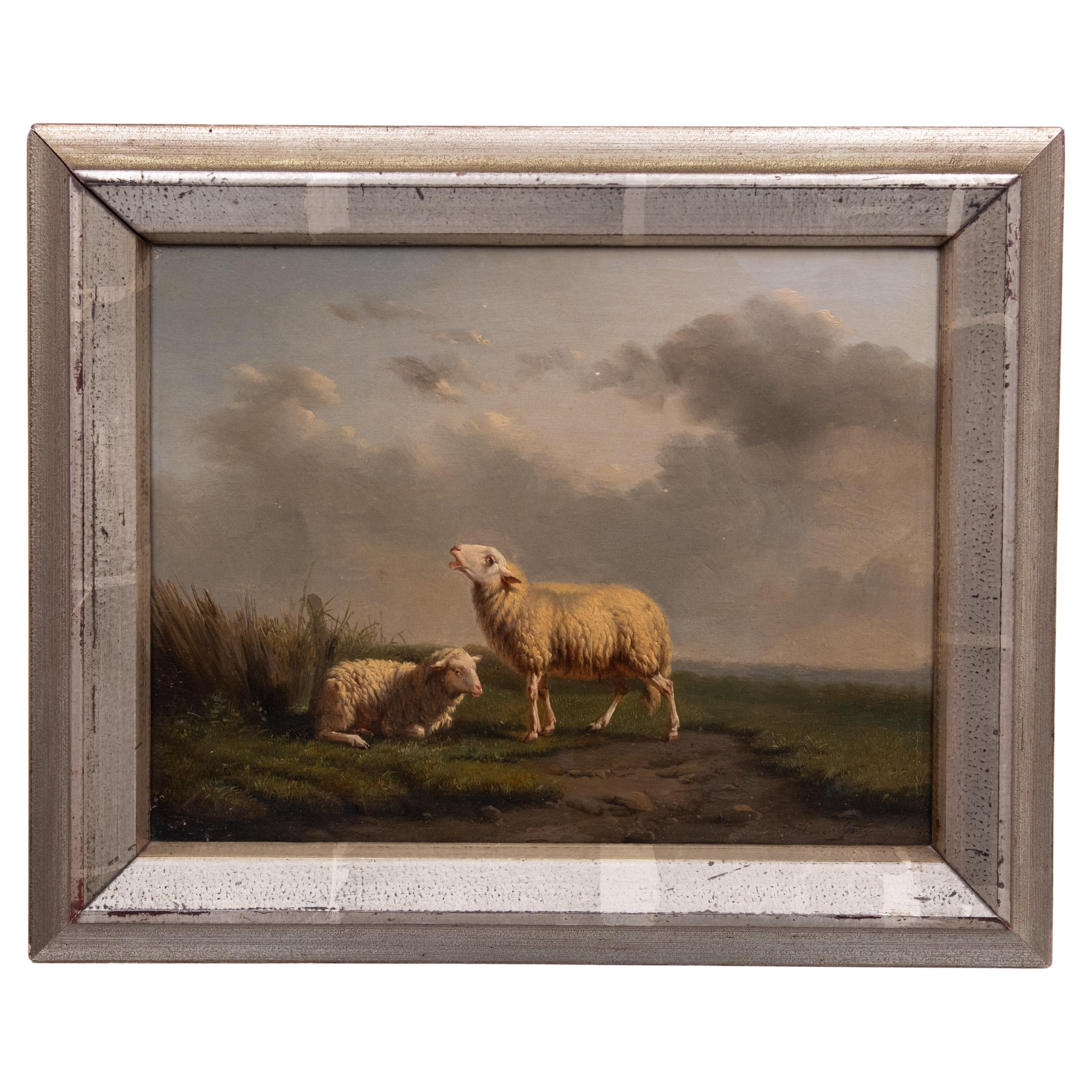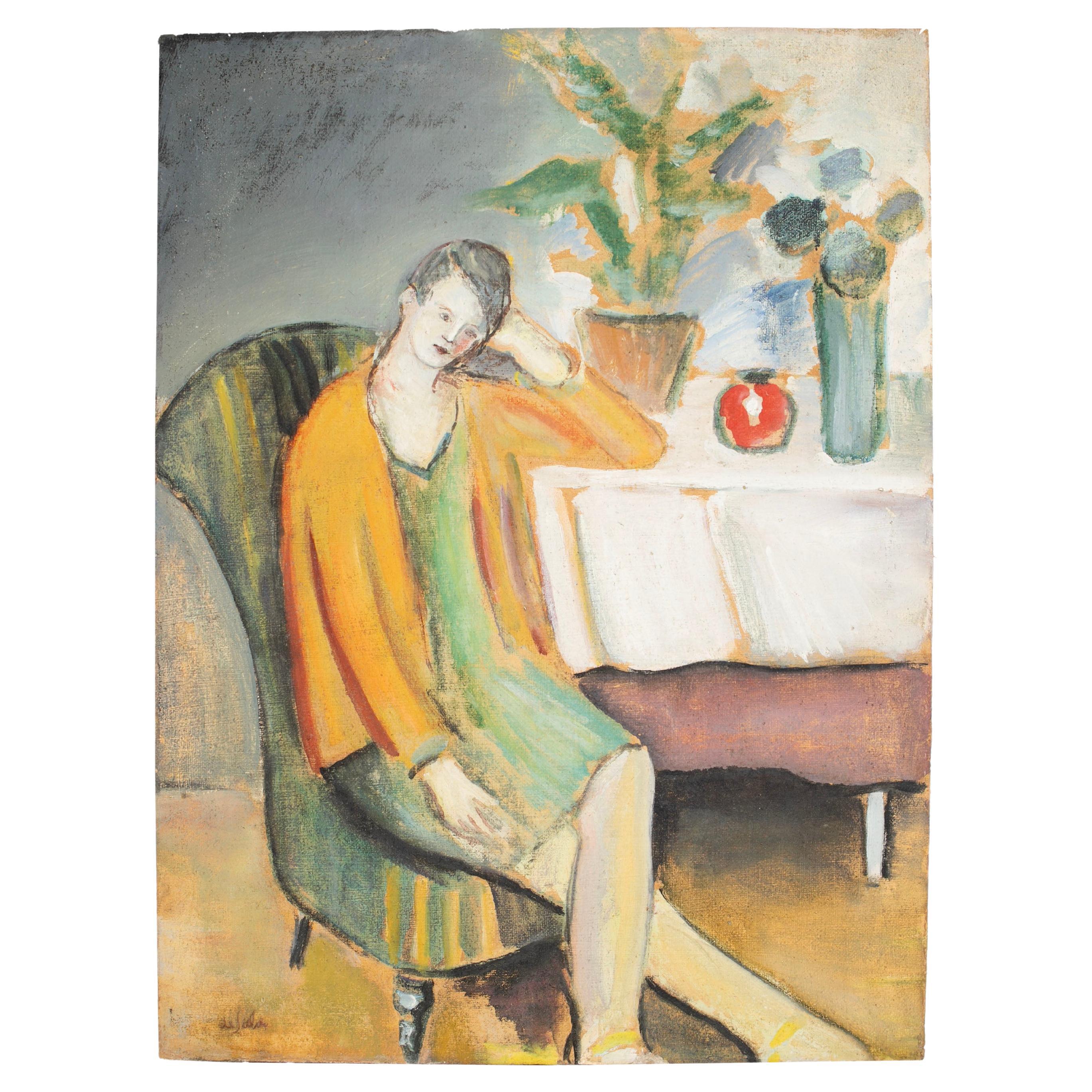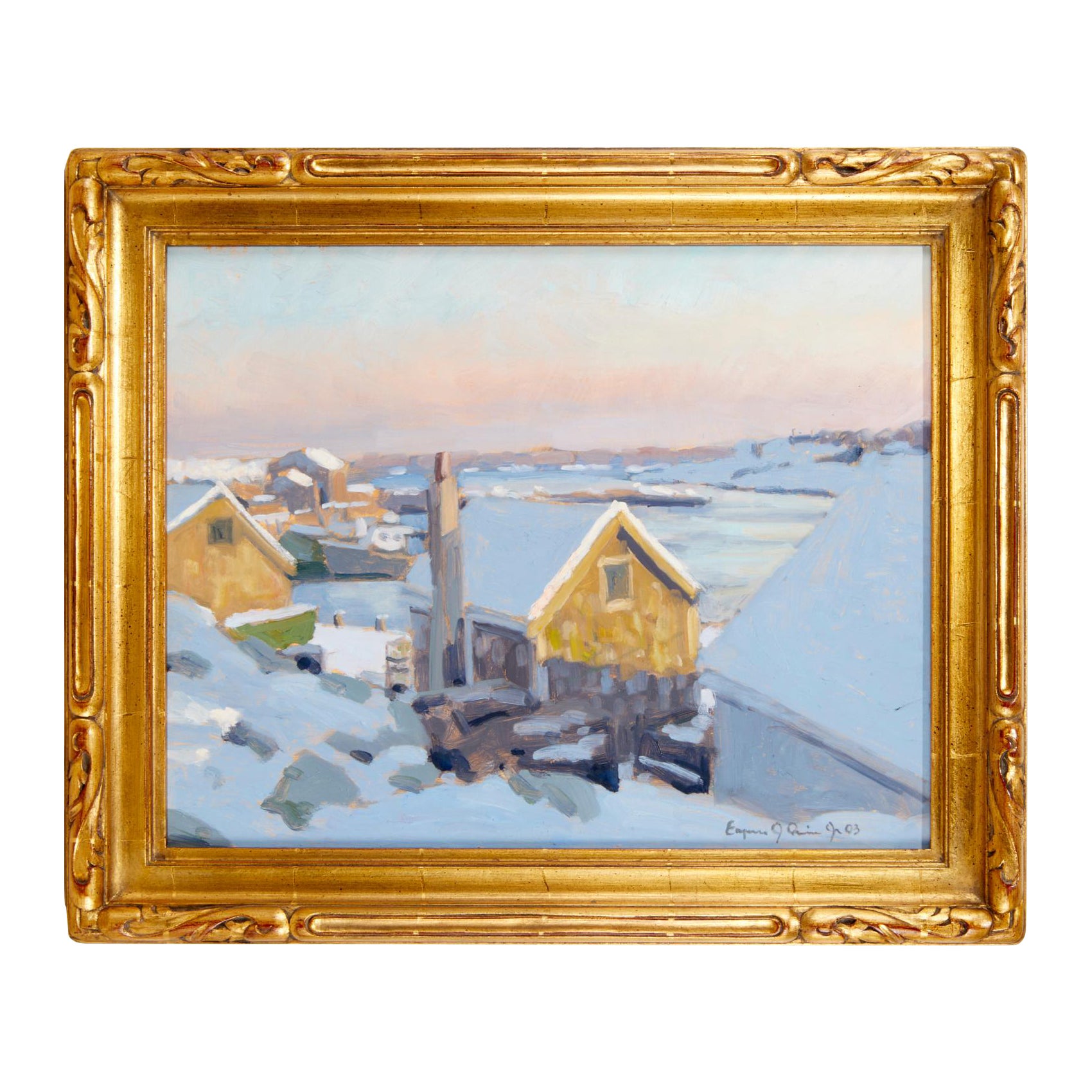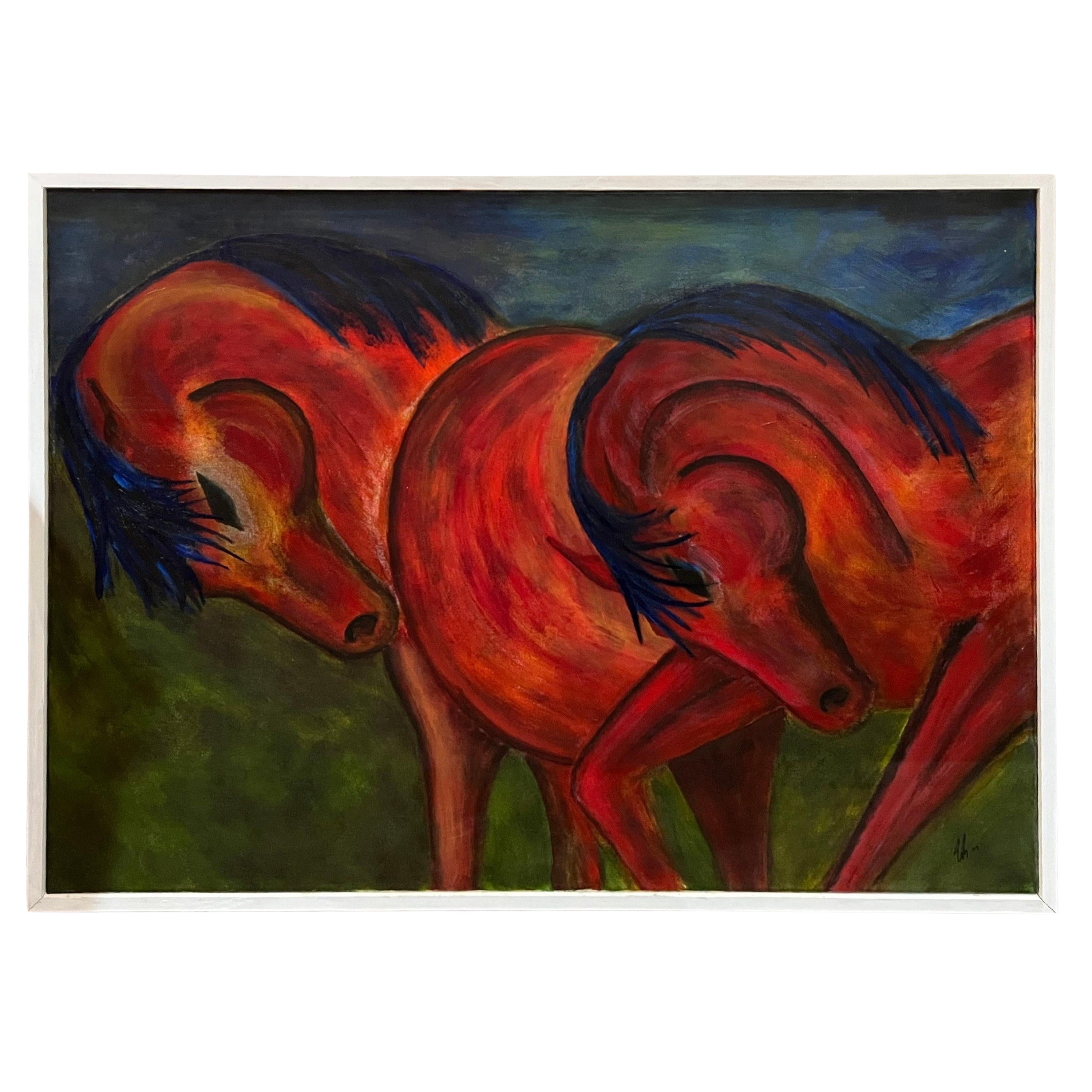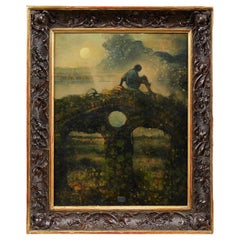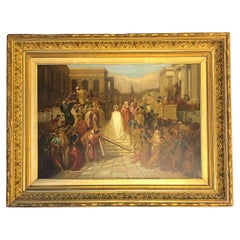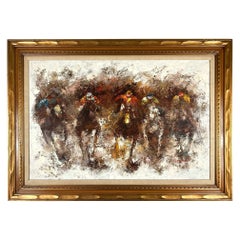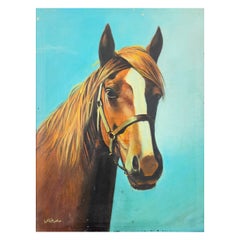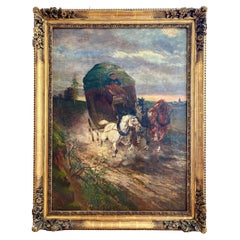
Eugène Péchaubès - Oil on Canvas, Horses Pulling a Carriole at High Speed
View Similar Items
1 of 14
Eugène Péchaubès - Oil on Canvas, Horses Pulling a Carriole at High Speed
$2,989.11List Price
About the Item
- Creator:Eugene Pechaubes (Painter)
- Dimensions:Height: 31.89 in (81 cm)Width: 23.63 in (60 cm)Depth: 1.97 in (5 cm)
- Materials and Techniques:
- Place of Origin:
- Period:
- Date of Manufacture:18th Century
- Condition:Wear consistent with age and use.
- Seller Location:Beaune, FR
- Reference Number:1stDibs: LU6050226462182
Eugene Pechaubes
Eugène Pechaubès was French painter and printmaker best known for his depictions of racehorses. He first became known for military scenes, particularly related to the Second Empire. Later he turned almost exclusively to action scenes of horses at celebrated French race courses.
Authenticity Guarantee
In the unlikely event there’s an issue with an item’s authenticity, contact us within 1 year for a full refund. DetailsMoney-Back Guarantee
If your item is not as described, is damaged in transit, or does not arrive, contact us within 7 days for a full refund. Details24-Hour Cancellation
You have a 24-hour grace period in which to reconsider your purchase, with no questions asked.Vetted Professional Sellers
Our world-class sellers must adhere to strict standards for service and quality, maintaining the integrity of our listings.Price-Match Guarantee
If you find that a seller listed the same item for a lower price elsewhere, we’ll match it.Trusted Global Delivery
Our best-in-class carrier network provides specialized shipping options worldwide, including custom delivery.You May Also Like
Eugène Berman (1899-1972) - Oil on canvas "Paludia"
By Eugene Berman
Located in NEUILLY-SUR-SEINE, FR
Eugène Berman - "Paludia" (1967-1968)
Type : Huile sur toile
Signature : Monogrammée en bas au centre, contresignée au dos
Date de création : 1967-Rome-1968
Dimensions : 67 cm x 54 cm
Encadrement : Rare cadre Troubadour en papier mâché, circa 1840
Expositions et provenance :
Étiquette d’exposition de la Galerie Lucie Weill au dos
Annotations de la Galerie Forni à Bologne
Bibliographie :
Galerie Lucie Weill, Les Néo-romantiques: Christian Bérard, Léonid et Eugène Berman, Pavel Tchelitchew, Paris, 1971.
"Paludia" est une huile sur toile réalisée par Eugène Berman entre 1967 et 1968 à Rome. L'œuvre, représentative de son style néo-romantique, est empreinte de mélancolie et de poésie, avec une touche onirique caractéristique de son approche théâtrale de la composition.
Son cadre troubadour en papier mâché, rare et datant de circa 1840, confère à l'œuvre une aura historique et une mise en valeur singulière, dans l'esprit des cabinets de curiosités qu'affectionnait l'artiste.
Biographie d'Eugène Berman (1899-1972) :
Né le 4 novembre 1899 à Saint-Pétersbourg, Eugène Berman est un peintre et décorateur de théâtre d’origine russe, naturalisé américain. Il est le frère de Léonide Berman.
Son éducation artistique débute en Europe occidentale, avec des formations en Allemagne, Suisse et France, où il suit les cours de Pavel Naumov et Sergey Gruzenberg entre 1914 et 1918. Après avoir quitté la Russie en 1918, il étudie à l'Académie Ranson à Paris, sous la direction de Maurice Denis et Édouard Vuillard.
Inspiré par Giorgio de Chirico et Picasso, il expose ses œuvres (portraits et paysages) aux Salons d’Automne et des Tuileries entre 1923 et 1927. Il promeut, aux côtés de son frère, une forme de peinture poétique et symboliste.
En 1935, il émigre aux États-Unis, où il travaille comme décorateur de théâtre tout en poursuivant son œuvre picturale. Il devient citoyen américain en 1937.
Il meurt le 14 décembre 1972, à Rome ou New York.
Cabinet de curiosités et collection personnelle :
Eugène Berman possédait une importante collection d’objets anciens, comprenant :
Céramiques, statuettes, sculptures, verrerie, textiles, tapis de diverses civilisations (précolombienne, africaine, de Nouvelle-Guinée, de Colombie-Britannique, égyptienne, copte, grecque, étrusque, romaine).
Mobilier italien et latino-américain du XVIe et XVIIe siècles.
Œuvres d’amis artistes, dont Mirko, Ernst, Cagli, Cremoni.
Sa collection fut installée dans un appartement romain, transformé en un véritable cabinet de curiosités, situé au dernier étage d’un palais proche de la Piazza del Popolo.
------------
Eugène Berman - "Paludia" (1967-1968)
Type: Oil on canvas
Signature: Monogrammed at the bottom center, countersigned on the back
Creation Date: 1967-Rome-1968
Dimensions: 67 cm x 54 cm
Frame: Rare Troubadour-style papier-mâché frame, circa 1840
Exhibitions and Provenance:
Exhibition label from Galerie Lucie Weill on the back
Annotations from Forni Gallery in Bologna
Bibliography:
Galerie Lucie Weill, The Neo-Romantics: Christian Bérard, Léonid and Eugène Berman, Pavel Tchelitchew, Paris, 1971.
"Paludia" is an oil on canvas created by Eugène Berman between 1967 and 1968 in Rome. Representative of his neo-romantic style, the piece exudes melancholy and poetic introspection, with a dreamlike quality reflecting his theatrical approach to composition.
The rare papier-mâché Troubadour frame, dating from circa 1840, enhances the historical aura of the work, aligning with the artist’s deep appreciation for curiosities and antiquities.
Biography of Eugène Berman (1899-1972):
Born on November 4, 1899, in Saint Petersburg, Eugène Berman was a Russian-born American painter and theater designer. He was the brother of Léonide Berman.
He received his early artistic education in Western Europe, training in Germany, Switzerland, and France, with studies under Pavel Naumov and Sergey Gruzenberg between 1914 and 1918. Leaving Russia in 1918, he studied at Académie Ranson in Paris, under the guidance of Maurice Denis and Édouard Vuillard.
Influenced by Giorgio de Chirico and Picasso, he exhibited his works (portraits and landscapes) at the Salons d’Automne and des Tuileries between 1923 and 1927. Alongside his brother, he championed a poetic and symbolic form of painting.
In 1935, he emigrated to the United States, working as a theater designer while continuing to produce allegorical works. He became an American citizen in 1937.
He passed away on December 14, 1972, in Rome or New York.
Cabinet of Curiosities and Personal Collection:
Eugène Berman owned a significant collection of antique artifacts, including:
Ceramics, statuettes, sculptures, glassware, textiles, and rugs from Pre-Columbian, African, New Guinea, British Columbia, Egyptian, Coptic, Greek, Etruscan, and Roman civilizations.
Italian and Latin American furniture...
Category
Vintage 1960s North American American Classical Paintings
Materials
Paint
Oil on Canvas Painting Depicts Christ by Eugene Hindle
Located in London, GB
Christ about to take up the Cross on the Via Dolorosa, Oil on canvas, Signed and dated lower left.
Frame: H: 105cm, W: 134cm, D: 10cm
Canvas: H: 71cm, W: 102cm, D: 2cm.
Category
Antique Late 19th Century Paintings
Materials
Canvas
Horse Racing Oil On Canvas Painting
Located in Pomona, CA
Four jockeys on the horse are competing on the horse track. The size without the frame is 35.50" W, 23.50"H
Category
Vintage 1960s American Paintings
Materials
Canvas, Wood, Paint
Oil on Canvas Arabian Horse Painting
Located in London, GB
A fine Arabian horse painting on a sky blue background signed lower left, Circa 1970 - 80.
Dimensions: H: 88cm, W: 79cm.
Canvas: H: 79cm,...
Category
20th Century Asian Paintings
Materials
Canvas
Oil on Canvas of a Horse, Signed
Located in Cypress, CA
Beautiful continental oil on canvas of a horse in a stable with ineligible signature In carved giltwood frame.
Late 19th-early 20th century.
Dimensions:
Canvas H. 12" x W. 14"
Ov...
Category
Early 20th Century European Paintings
Materials
Canvas
1970s Signed Oil on Canvas Man Pulling Rope
Located in Tarrytown, NY
1970s oil on canvas man pulling rope.
Category
